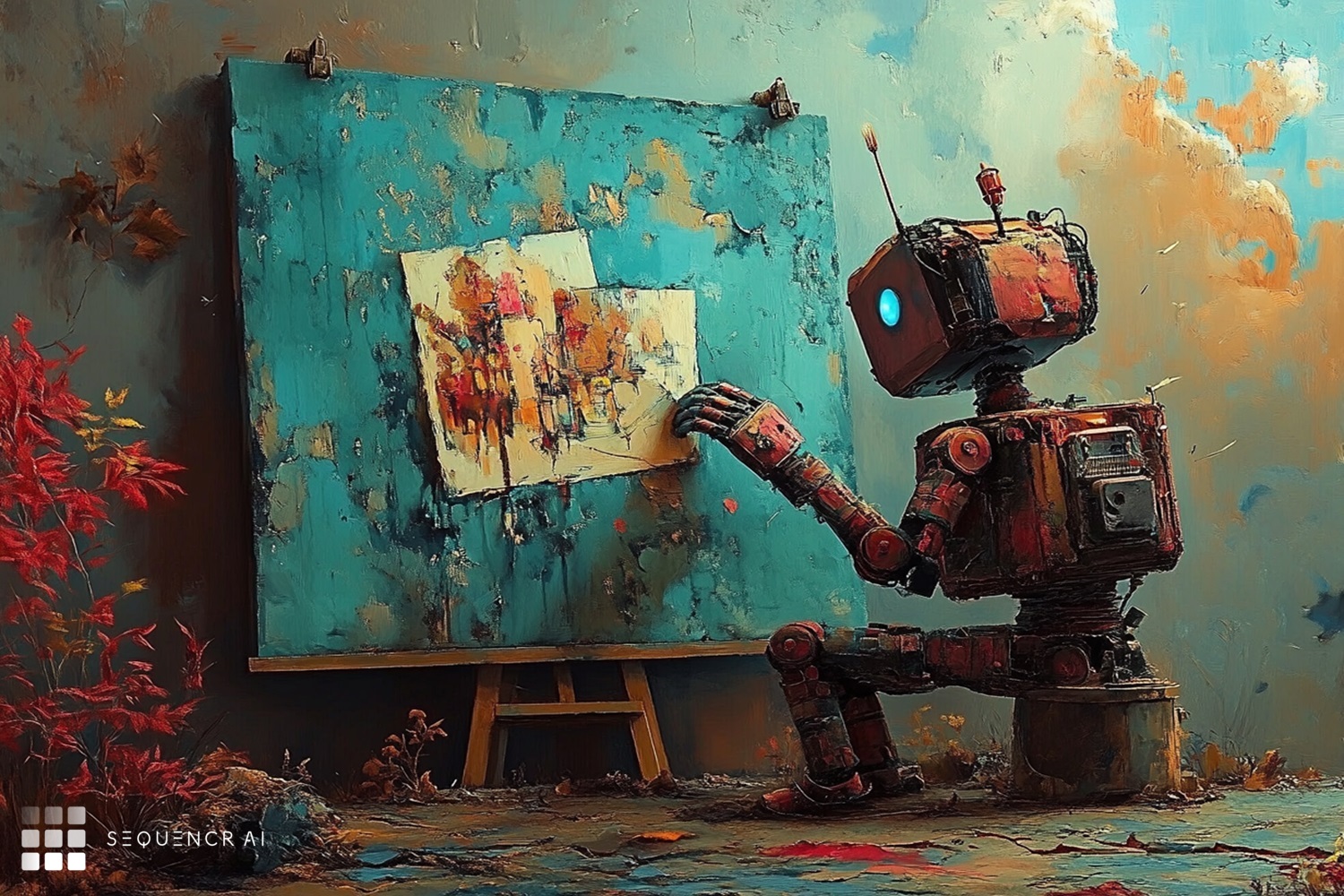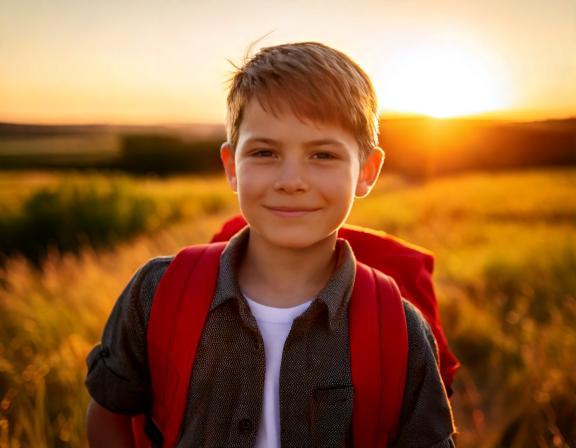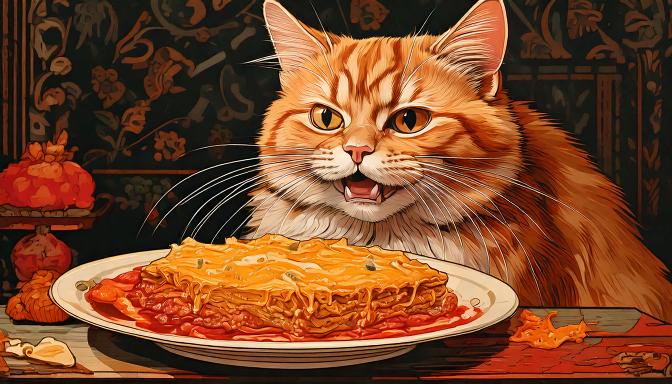
• The Generative AI Creative Revolution: AI-generated artwork is transforming the art world, enabling artists to experiment with new styles and concepts that were previously impossible to achieve.
• The Uncanny Valley Effect: The eerie feeling of AI-generated art raises questions about its authenticity and emotional resonance, forcing us to reevaluate our definitions of beauty and creativity.
• Authorship and Ownership: The use of AI in art raises ethical questions about who owns the work, highlighting the need for regulations to balance intellectual property rights with the desire for freedom of expression.
• The Future of AI in Creative Work: The possibilities for AI-generated art are limitless, with AI-generated content becoming a staple in marketing workflows .
The intersection of artificial intelligence (AI) and art is opening new doors that challenge everything we think we know about creativity. AI-generated artwork has quickly become a hot topic, pushing the boundaries of artistic expression in ways that were unimaginable just a few years ago.
A key part of this conversation is the “Uncanny Valley”: that unsettling feeling we get when something seems almost, but not quite, human. While the term originated in robotics, it applies just as well to AI art, sparking questions about creativity, authenticity, and whether we can truly connect such creations.

As we incorporate AI more and more at work and in daily life, taking stock of our cognitive biases can help to build intentionality about our growing appetite for Generative AI. Reflecting on the implications and value of AI-generated art can shed insight on our emotional and philosophical understanding of creativity: within the marketing process, as well as outside of it.
How AI is Changing the Art World
Generative AI has been transforming the entire creative process. By using algorithms that can analyze massive amounts of data and learn from patterns, the technology allows artists to experiment with new styles and concepts that would be difficult, or even impossible, to achieve through other means.
When artists can generate a stunning, complex image with a few clicks or use data from multiple sources to inspire fresh artistic direction, they have a whole new palette and toolkit. And like all tools, AI doesn’t replace the artist. Human beings derive creativity from lifetimes of experiences and emotions, along with other intangibles that inspire them to create original works of art. What Generative AI and other technologies do is free them up to focus on the heart of their work - concept and expression - while handling the technical heavy lifting.
An early example is Refik Anadol’s groundbreaking AI art installations with the Philadelphia Orchestra. By feeding data from live performances and the surrounding environment into machine learning algorithms, Anadol created stunning visuals in real-time, giving audiences an ever-evolving sensory experience that connects sound with sight in a way that feels almost otherworldly.
In 2024, Anadol brought his AI-powered art to the United Nations headquarters in New York. His large-scale immersive art installation, Large Nature Model: Coral, makes use of a machine learning algorithm trained on 100 million images of coral reefs. It seeks to inspire innovative solutions for the consequences of environmental degradation, through the potential of AI.

These exhibitions are more than just a display of tech. They’re also part of an ongoing conversation about what art can become in a digital age. During the Renaissance, Leonardo da Vinci’s fascination with science influenced his art, and his mechanics (including the first-ever designs for a humanoid robot) were inspired by the natural world. In much the same way, Generative AI art harmonizes the opposite yet adjacent fields of technology and art: and in doing so, can enable and inspire creatives and technologists to innovate and think bigger.
Navigating the Uncanny Valley: The Eerie Feeling of AI Art
The Uncanny Valley is a strange and fascinating place. AI-generated art often skirts the edges of this psychological phenomenon, leaving us feeling more than a little unsettled. There’s something about the almost-human quality of AI creations that can feel off-putting, when our brains seem to pick up on the tiny inconsistencies that tell us, “This isn’t quite right.”
And yet, that very discomfort forces us to ask deeper questions about what makes art “real” or emotionally resonant. Can something be truly beautiful if it wasn’t made by human hands? And does it matter?
Some artists are leaning into this discomfort, using the eeriness of AI creations to provoke thought and wonder. Instead of shying away from the unsettling aspects, they embrace them, pushing viewers to reconsider their definitions of beauty and creativity. Others aim for seamless integration, attempting to create AI-generated pieces that feel indistinguishable from human-made art.
Either way, it’s about balance: finding a way to use AI’s incredible capabilities, while still engaging viewers emotionally. Returning to the example of da Vinci, the Vitruvian Man is one of his most famous drawings, and depicts his synthesis of both artistic and scientific ideals. It was built upon the work of the ancient engineer Vitruvius, and corrected inaccuracies in part by incorporating new methods of ratio measurement. Today’s AI art can similarly evoke new ideas and ways of thinking, even and especially through its ability to evoke new emotions through the real/unreal dichotomy.

The Two-fold Question of Authorship and Authenticity
As with any new technology, AI art brings up some tricky ethical questions - chief among them, who owns the work? If an AI is trained on thousands of existing artworks, can we really call its creations original? And if not, who gets credit: the artist who programmed the AI, or the countless artists whose work was fed into the algorithm?
As AI becomes more integrated into creative and commercial processes, these are questions that need answers. Right now, the laws around AI-generated art are still playing catch-up. While the related intellectual property issues continue evolving, the most likely outcome is that regulations find a suitable balance between the rights subsisting within original content, and the desire for freedom of expression assisted by Generative AI.
The Future of AI in Art
One of the biggest questions AI raises is what it really means to be creative. Can a machine be truly creative, or is creativity something uniquely human? As AI becomes more sophisticated, these lines are blurring. The artworks generated by AI can evoke powerful emotions, challenge perceptions, and spark philosophical debates - just like human-made art. We need to rethink our ideas about what creativity looks like in the digital age.
The marketing possibilities for AI-generated art are practically limitless. We’ve already seen AI used in marketing campaigns, like Toyota’s AI billboards, and in customer engagement strategies, such as Burberry’s AI chatbot campaign. And last year, Hellman’s collaborated with TikTok users to plan meals around their leftovers - by asking ChatGPT to help. Looking forward, it’s likely that AI generated content - both copy and creative - will become a staple in marketing workflows.
In the end, AI and human creativity don’t have to be at odds. They can work together to create a richer, more diverse artistic landscape. The future is full of opportunities for AI to enhance human’s creative ideas, and to push the boundaries of what’s possible in art and human expression. AI art might not always feel entirely “human,” but it adds undeniable value to the creative process.

As art continues challenging expectations and sparking new ways of seeing the world, it remains the humans’ responsibility to concurrently embrace the possibilities offered by Generative AI, and to remain intentional about navigating the ethical and philosophical questions that it raises.